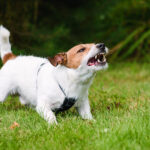What Are Hackles On A Dog
Hackles on a Dog: Understanding the Science Behind This Fascinating Phenomenon
Dogs are fascinating creatures that have captured human hearts for centuries. They are loyal, intelligent, and possess an uncanny ability to understand our emotions. One of the most intriguing aspects of dogs is their hackles – the raised hair along their back and neck when they are aroused or feel threatened. But what exactly are hackles on a dog? And why do they raise them in certain situations?
In this article, we will explore the science behind hackles on a dog. We’ll take a closer look at what causes them to raise, what it means when they do, and how to interpret your dog’s body language to better understand them.
What Are Hackles on a Dog?
Hackles are the raised hair along a dog’s back and neck that stand up when they feel threatened or aroused. They are caused by a reflexive muscle called the piloerector muscle, which contracts when stimulated by the sympathetic nervous system. This muscle is responsible for raising hairs all over a dog’s body, not just on their neck and back.
The piloerector muscle is part of the fight or flight response in animals. When a dog feels threatened or senses danger, their sympathetic nervous system kicks in, causing their heart rate to increase and adrenaline to flow through their body. This response prepares them for action – either to fight off a threat or flee from it.
When the piloerector muscle contracts, it pulls on the hair follicle and causes the hair to stand up straight. This makes the dog appear larger and more intimidating to potential threats. It also helps to protect vulnerable areas like the throat and abdomen by making them less accessible to attackers.
Why Do Dogs Raise Their Hackles?
Dogs can raise their hackles for several reasons, including:
1. Fear: When a dog feels afraid or threatened, they may raise their hackles to appear more intimidating and protect themselves.
2. Aggression: Dogs may also raise their hackles when they feel aggressive or ready to fight. This is a warning sign to other dogs or animals that they are not to be messed with.
3. Excitement: Sometimes, dogs may raise their hackles when they are excited or playful. This is usually accompanied by wagging tails and other signs of happiness.
4. Pain or discomfort: In some cases, dogs may raise their hackles in response to pain or discomfort. This could be due to an injury, illness, or other underlying health issue.
How to Interpret Your Dog’s Body Language
Understanding your dog’s body language can help you better communicate with them and respond appropriately to their needs. Here are some signs to look for when interpreting your dog’s hackles:
1. Raised hackles with a stiff body posture: This is a sign that your dog is feeling threatened or fearful. They may also growl, bark, or show teeth as a warning.
2. Raised hackles with a relaxed body posture: If your dog’s hackles are raised but their body is relaxed, this could indicate excitement or playfulness. They may be wagging their tail and jumping around in anticipation.
3. No raised hackles: If your dog is not showing any signs of raised hackles, this likely means they are calm and relaxed. They may be laying down, sitting quietly, or just enjoying your company.
Conclusion
Hackles on a dog are a fascinating phenomenon that serve an important purpose in protecting and communicating with others. Understanding the science behind why dogs raise their hackles can help us better interpret their body language and respond appropriately to their needs. Whether your dog is feeling fearful, aggressive, excited, or comfortable – paying attention to their hackles can give you valuable insight into what they’re thinking and feeling at any given moment.
So, the next time you see your furry friend’s hackles raised, take a closer look and try to understand what they’re trying to tell you. And remember – even though our dogs cannot speak, their body language can be just as expressive if we know how to read it properly.



